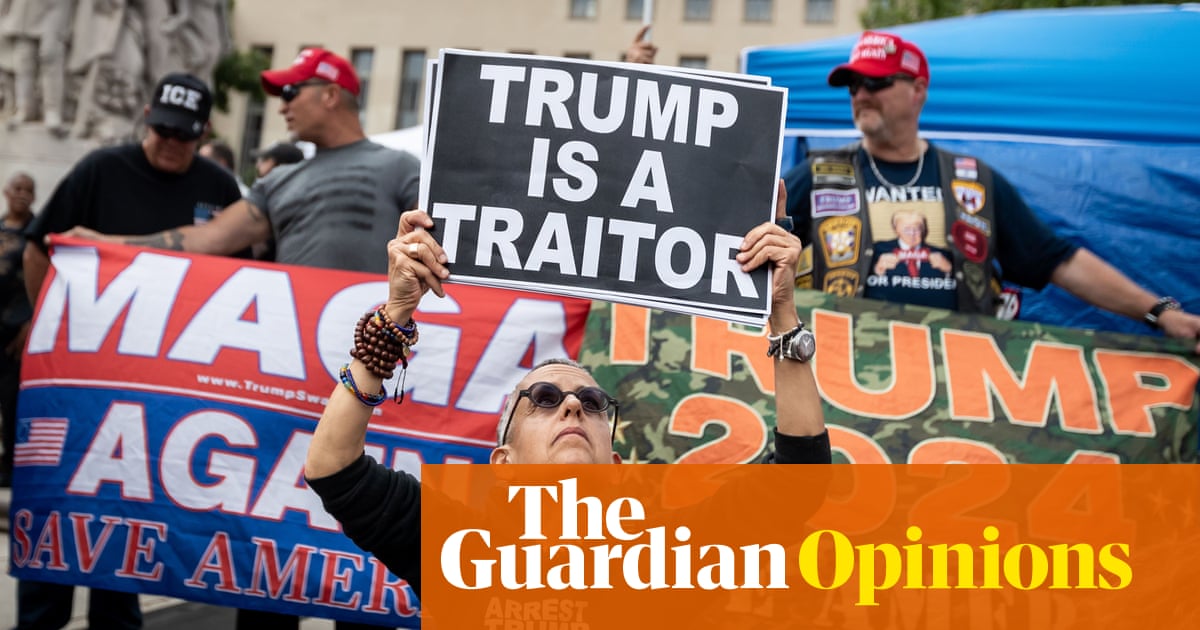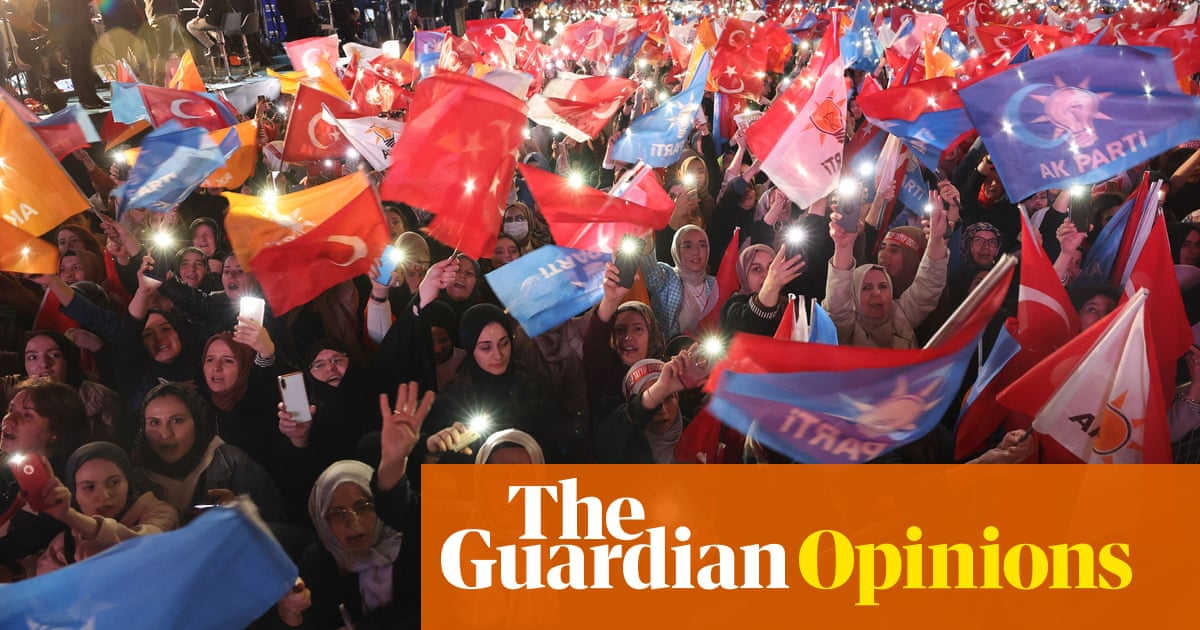
For anyone who cares about the Amazon rainforest, there will be an extra reason to celebrate the new year countdown in Brazil on 31 December because the first stroke of midnight will mark the last moment in power of Jair Bolsonaro.
The defeat of the ultra-right former army captain, who unleashed a wave of forest burning and river poisoning during his four years in office, was arguably the world’s best environmental news of 2022. As he is replaced by Luiz Inácio Lula da Silva, here are seven reasons to be cheerful about the Amazon in 2023, and three reminders of why that’s no excuse for anyone to drop their guard.
1. The only way is up
Anyone would feel a relief after the firestorm that was Bolsonaro. Here is the baseline the outgoing president leaves. Data from Brazil’s space agency confirms no other leader has overseen such a sharp increase in deforestation – 59.5% over a presidential term – since satellite records began in 1988. Bolsonaro, who tried his hand at gold prospecting before he was in the army, has also overseen invasions of tens of thousands of illegal miners into the lands of the Yanomami, Munduruku, Kayapo and other Indigenous peoples, leading to violence, disease, wrecked landscapes and mercury contamination of the Amazon’s greatest waterways. His ministers trashed the government agencies responsible for protecting the forest, nature reserves and indigenous territories. Criminals enjoy a culture of impunity. Environmental fines are down 38%. The first job of the new government will be to glue back together the broken pieces of the environmental institutions Bolsonaro shattered.
2. Marina Silva is back
Marina Silva was arguably the world’s most effective environment minister during the first Lula administration from 2003 to 2006. As a former rubber tapper and union activist, she struck exactly the right balance between livelihood support and nature protection. She introduced policies that led to an 80% fall in Amazon deforestation, opposed agrotoxins and biofuels, and tried to block roads, dams and other infrastructure projects that threatened important areas of nature. Her problem was that she was so effective she made powerful enemies in the construction and agriculture sectors.
Lula backed them instead of her, prompting Silva’s resignation. However, she is favourite to be the next environment minister, despite lobbying against her by the agribusiness and financial sectors. As the choice of conservationists and the candidate with the strongest international profile, anyone else would be a blow to the environmental credibility of the new government.
3. Lula now gets it
Or so his public speeches suggest. After the election results were announced, Lula used his victory speech to emphasise the need to fight for the environment, indigenous rights and zero deforestation by 2030. This was a big advance on his previous commitment to halt only illegal deforestation. For his first overseas trip as president-elect, he attended the Cop27 climate summit in Egypt. Silva says she agreed to rejoin him because Lula now realises the severity of the climate crisis and that the old models of national development are no longer sustainable. She has persuaded him that zero deforestation goals must apply not only to the Amazon, but to other globally important biomes such as the Pantanal wetlands and the Cerrado savanna.
4. An environment ministry with more cash and muscle
The transition team has asked for 536m reais (£83m) additional cash. The money would be used for field operations against illegal miners and loggers, firefighting units, and a resumption of bolsa verde (green grant) incentives for smallholders to maintain forests and rivers. In addition, the environment ministry would take back control over waterways and forest services, which were hived off to the agriculture ministry and development agency under Bolsonaro. To finance reforestation projects, the government would redirect environmental fines under a system that proved effective during the administration of Michel Temer, who was president between 2016 and 2018. The ministry also plans greater coordination with subnational governments, an important bureaucratic step that would help the federal authorities to close local loopholes. The toughest ask, however, is for 2,000 additional staff, which is essential to launch more investigations and put officers in the field. But no budget has been allocated yet for this.
5. Deforestation profiteers face penalties and prison.
The new administration will have to send a strong early signal that the years of impunity are over for land grabbers. This is expected to come in the form of a mass embargo of thousands of companies and landowners involved in illegal deforestation. Silva proved the effectiveness of this last time she was environment minister by tracking down the money-men who finance Amazonian land thefts and punishing them with business embargos, credit withdrawal, blacklisting and fines. Whether or not she gets the post again, expect much more of the same between January and April. These punitive measures are much easier now because hi-tech satellite monitoring by groups such as MapBiomas can quickly and accurately tell where land is being cleared and who owns the land. There is no longer any need to put boots on the ground. Embargo notices can be automatically sent out like speeding fines. The federal police will also be tasked with investigating shell companies so the real investors – often dentists, graphic designers and car salesmen in the south of Brazil – are caught and punished. Contrary to the myth peddled by Bolsonaro, the vast majority of deforestation can be traced to a small, wealthy elite.
6. Police and the army will drive out (some) invaders
One of the media blitzes in the first weeks or months of the new government will be a big operation or series of operations against illegal mining camps inside indigenous Yanomami, Munduruku or Kayapo territory. Expect Hollywood-esque images of forest protection agents swooping down in military helicopters, rounding up criminals, and then burning all the equipment in sight. Again, this will be largely about sending signals. A real solution will take much more time and be much more complex because illegal mining camps are scattered all over the Amazon, often co-opt Indigenous people and will leave thousands of poor, untrained people out of work and in need of relocation and state support to start different lives. All of this will signal the state is back in the Amazon. And the Amazon will be more in the state than before thanks to the creation of an Indigenous ministry, which is likely to be headed by Sônia Guajajara.
7. The outside world has started to step up
The fate of the rainforest is not decided in the Amazon, but in the overseas markets that buy its beef, wood, soy and iron ore. So another piece of good news in 2022 was the European Union’s decision to adopt new regulations on deforestation-free trade. The new rules impose strict traceability requirements on forest products and will block those that are sourced in areas of unsustainable deforestation or degradation. This is a big step forward from the previous approach, which relied on voluntary actions, and it is hoped the Amazon’s two other main customers – China and the United States – will adopt similar measures. Brazilian beef and soy companies would then have a strong incentive to increase productivity by rehabilitating degraded land rather than by clearing forest. Add to this the new global deal on biodiversity just agreed in Montreal, which promises $30bn (£25bn) to ensure 30% of nature is protected by 2030, and it looks likely the Amazon will be getting more support from outside. More important still is for overseas campaigners to continue to put pressure on Brazil to maintain high environmental standards. This will help Lula in the coming battles with the agriculture lobby and dam builders.
All of this is likely to result in a substantial drop in Amazon deforestation next year, although it will not show up fully in the annual results until 2024. However, this is not guaranteed and the situation remains perilous. Here are three sobering reminders why a change of government is not enough by itself to save the planet’s greatest concentration of terrestrial life.
1. Dangerous divisions
Splits inside Brazil make everything more difficult and dangerous. Lula’s election victory by just 1.8 percentage points shows the split in national opinion, and in Congress, Bolsonaristas made major gains. Pushing through budgets and legislation will be difficult without compromising with the powerful ruralista caucus of agribusiness-backed politicians, some of whom supported Lula and will expect favours in return. The right wing, meanwhile, will continue to push existing bills that aim to legitimise earlier land grabs, weaken environmental licensing and permit mining in indigenous land. Some of the fiercest opposition is in Amazonian towns on the “arc of deforestation”, where loggers and ranchers have blocked roads. In Roraima, where the brutal invasion of Yanomami land by illegal miners has taken place, most of the local population are directly or indirectly dependent on gold and opposed to federal moves to restore the territory to its Indigenous owners. There will be violence. There will be protests. There may also be deaths. Hopefully there will also be support and alternatives for those forced to relocate.
2. Markets remain invested in death
The Amazon will never be safe while trees are worth more dead than alive. That is still the case. Commodity markets put a far greater value on forest products, such as beef, gold, timber, soy and iron-ore, than they do on the forest itself. There have been efforts to change this through carbon credits and ecosystem service payments that recognise and price the role of the forest in absorbing CO2, pumping water across the skies and providing a habitat for biodiversity. Soon after Lula takes power, Norway and Germany will resume channelling hundreds of millions of euros through the Amazon Fund, which can help to pay for increased forest protection, but most wealthy nations are reluctant to pay for something they have taken for granted for centuries. The spigot of international funds needs to open much wider or old extractivist-capitalist incentives will tilt people towards fire rather than conservation. But it is easily affordable if it is made a priority. To get a sense of current priorities, Britain wasted £8bn on poorly planned or price-inflated personal protective equipment during the Covid pandemic. That is 15 times more than the entire Amazon Fund, which is the biggest international effort to save a globally essential ecosystem.
3. Time is running out
Even under Lula, Brazil – like almost every other country in the world – is not acting with sufficient urgency. Scientists warn the Amazon is close to a tipping point, after which the humid, biodiverse rainforest will not be able to recover and it will degrade instead into a dry savanna. That calamity is said to strike when deforestation is between 20 and 25%. The cleared area now is 17% with another 17% degraded, so this point is close. In some areas it has already arrived: droughts are growing longer, trees are more vulnerable to fire and so the forest emits more carbon than it absorbs, turning it from a climate friend to a climate foe. Given this worsening calamity, the Amazon crisis is far more critical than when Lula was last in power. Yet most of the work done by his transition team has been focused on rebuilding the capacity that was lost under Bolsonaro rather than adding new measures that take account of the increased danger. There are more ambitious steps that could be pushed by Brazil, such as a major reforestation programme and a moratorium on beef from deforested land. But the real urgency has to come from outside, and be joined with real money. If not, Lula will simply slow the arrival of Amazonian collapse, rather than prevent it.












